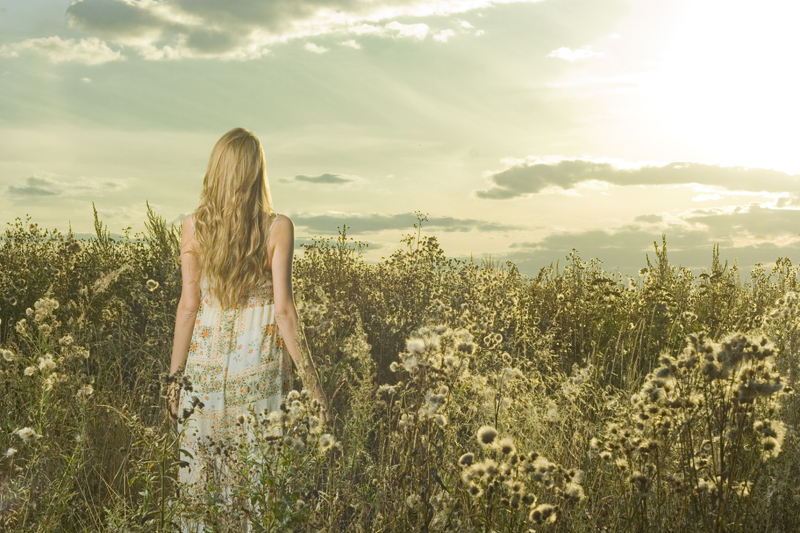Natural Dyes for Fabric

Coloring textiles and artifacts has always been a cultural and artistic tradition dating back to times known to antiquity. Understanding the basics of natural dyes and how to get the color intensity onto the fabric chosen can be interesting and rewarding.
Since vegetables, fruits, flowers, coffee, tea and nuts are easily sourced, these are commonly used when attempting to individually produce an eco-friendly natural coloring dye potentially free of chemicals and unknown additives.
Some common plants that can be used to make natural color dyes:
Yellows – use onion skins or turmeric, sunflower petals, bay leaves, dandelion flowers, marigolds, celery leaves
Browns/tans - coffee grounds, tea, crushed walnut shells
Pinks – bougainvillea flowers, red roses, lavender buds, avocado skins
Blues/purples/reds – any kind of berry or red cabbage, hyacinth flowers, beets, daylily blooms, safflower
Greens – artichokes, stinging nettle
Golds - red clover leaves and Saint-John's-wort
Generally, fabric made from natural fibers that take up natural dyes with ease include those made of cotton, bamboo, hemp and linen (all plant based fibers), silk (customarily from silk worm cocoons), wools (animal based such as sheep, llamas, alpacas, mohair (from angora goats to name just a few), and rayon (made from the cellulose of wood pulp or cotton). Light-colored fabrics of course will take up natural dyes with the best color results.
To dye fabrics using natural plant-based products:
To begin, always use gloves to avoid skin contact, cut up plant material into small pieces and place in a pot with a gallon or more of water. Bring to a boil, simmer for about an hour. Strain out plant material and discard.
When using berries to dye the fabric, create a salt fixative. Use 1/2 cup salt for every one gallon of water. Submerge fabric and gently heat in the mixture to very hot for one at least one hour. Wring out gently.
When using plants to dye the fabric, create a vinegar fixative. Combine one part vinegar for every four parts water, then gently heat the fabric and mixture to very hot for at least one hour. Wring out gently.
Note: Fixatives are also called mordants and help to set the dye and enhance colors. Cream of tartar (keeps fabric supple) and food-grade alum (brightens) are also fixatives. Purchased commercially produced dyes already have a fixative component. Since naturally sourced foraged or purchased plants to produce dyes do not (except for a few like walnuts), it is recommended to use an appropriate fixative, before or after dying the fabric so the dye combines well with the fabric and aids in preventing excessive color fading over many launderings. The type of fixative used will impact resultant colors.
Place wet fabric in dye bath. Simmer until darker than desired color is obtained as the color will become lighter when fabric has dried. For the darkest color possible, allow fabric to soak in the dye bath overnight. When done, rinse fabric separately in cold water and line or machine dry. Iron dry fabric if necessary to remove wrinkles and re-straighten fabric; proceed with chosen sewing project!
Use safety glasses and rubber gloves, cover clothes to avoid staining, use utensils and pots separate from cooking and eating kitchenware, and cover surfaces like countertops or tables with newspapers or old towels.
Sew happy, sew inspired.
Since vegetables, fruits, flowers, coffee, tea and nuts are easily sourced, these are commonly used when attempting to individually produce an eco-friendly natural coloring dye potentially free of chemicals and unknown additives.
Some common plants that can be used to make natural color dyes:
Yellows – use onion skins or turmeric, sunflower petals, bay leaves, dandelion flowers, marigolds, celery leaves
Browns/tans - coffee grounds, tea, crushed walnut shells
Pinks – bougainvillea flowers, red roses, lavender buds, avocado skins
Blues/purples/reds – any kind of berry or red cabbage, hyacinth flowers, beets, daylily blooms, safflower
Greens – artichokes, stinging nettle
Golds - red clover leaves and Saint-John's-wort
Generally, fabric made from natural fibers that take up natural dyes with ease include those made of cotton, bamboo, hemp and linen (all plant based fibers), silk (customarily from silk worm cocoons), wools (animal based such as sheep, llamas, alpacas, mohair (from angora goats to name just a few), and rayon (made from the cellulose of wood pulp or cotton). Light-colored fabrics of course will take up natural dyes with the best color results.
To dye fabrics using natural plant-based products:
To begin, always use gloves to avoid skin contact, cut up plant material into small pieces and place in a pot with a gallon or more of water. Bring to a boil, simmer for about an hour. Strain out plant material and discard.
When using berries to dye the fabric, create a salt fixative. Use 1/2 cup salt for every one gallon of water. Submerge fabric and gently heat in the mixture to very hot for one at least one hour. Wring out gently.
When using plants to dye the fabric, create a vinegar fixative. Combine one part vinegar for every four parts water, then gently heat the fabric and mixture to very hot for at least one hour. Wring out gently.
Note: Fixatives are also called mordants and help to set the dye and enhance colors. Cream of tartar (keeps fabric supple) and food-grade alum (brightens) are also fixatives. Purchased commercially produced dyes already have a fixative component. Since naturally sourced foraged or purchased plants to produce dyes do not (except for a few like walnuts), it is recommended to use an appropriate fixative, before or after dying the fabric so the dye combines well with the fabric and aids in preventing excessive color fading over many launderings. The type of fixative used will impact resultant colors.
Place wet fabric in dye bath. Simmer until darker than desired color is obtained as the color will become lighter when fabric has dried. For the darkest color possible, allow fabric to soak in the dye bath overnight. When done, rinse fabric separately in cold water and line or machine dry. Iron dry fabric if necessary to remove wrinkles and re-straighten fabric; proceed with chosen sewing project!
Use safety glasses and rubber gloves, cover clothes to avoid staining, use utensils and pots separate from cooking and eating kitchenware, and cover surfaces like countertops or tables with newspapers or old towels.
Sew happy, sew inspired.

Related Articles
Editor's Picks Articles
Top Ten Articles
Previous Features
Site Map
Content copyright © 2023 by Cheryl Ellex. All rights reserved.
This content was written by Cheryl Ellex. If you wish to use this content in any manner, you need written permission. Contact Cheryl Ellex for details.







